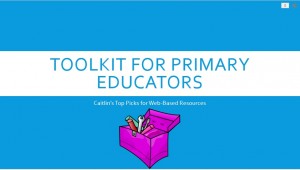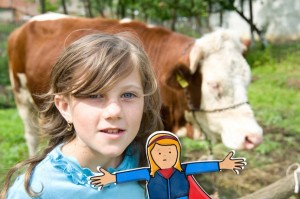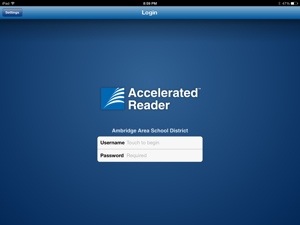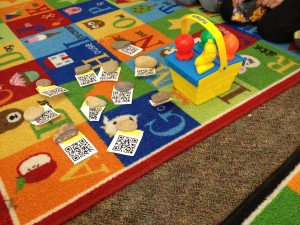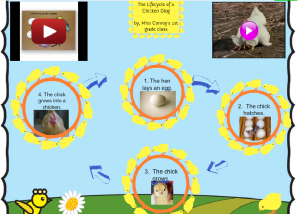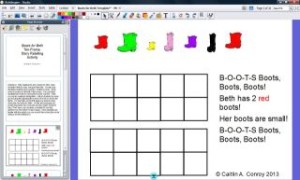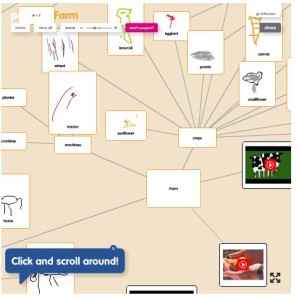 Over the past two weeks, my mental model of inquiry-based learning has developed. One new insight I have gained is that there different types of inquiry. Inquiry can be teacher directed, teacher-student shared or student directed. I also learned that these types of inquiry-based learning exist on a spectrum. On one end of the spectrum is structured, teacher-directed inquiry and on the other end of the spectrum is student-centered, open inquiry. In the middle of the spectrum is guided inquiry that is teacher-student shared. We also learned that inquiry can be multidisciplinary (Topic C, 2018). Continue reading
Over the past two weeks, my mental model of inquiry-based learning has developed. One new insight I have gained is that there different types of inquiry. Inquiry can be teacher directed, teacher-student shared or student directed. I also learned that these types of inquiry-based learning exist on a spectrum. On one end of the spectrum is structured, teacher-directed inquiry and on the other end of the spectrum is student-centered, open inquiry. In the middle of the spectrum is guided inquiry that is teacher-student shared. We also learned that inquiry can be multidisciplinary (Topic C, 2018). Continue reading
Tag Archives: reading
Shining a Spotlight on Three Exemplars of Project Based Learning
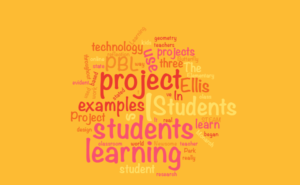 This summer I began taking courses online through Wilkes University to add a STEM endorsement to my Pennsylvania Teaching Certificate. This past week I began one of the required courses, Project Based Learning. In my STEAM classroom, I have designed 9 weeks long projects, however, I look forward to learning how to fully implement Project Based Learning properly in my classroom. During the first week of this course, we viewed videos showcasing three different examples of project-based learning. You can view the videos below.
This summer I began taking courses online through Wilkes University to add a STEM endorsement to my Pennsylvania Teaching Certificate. This past week I began one of the required courses, Project Based Learning. In my STEAM classroom, I have designed 9 weeks long projects, however, I look forward to learning how to fully implement Project Based Learning properly in my classroom. During the first week of this course, we viewed videos showcasing three different examples of project-based learning. You can view the videos below.
Toolkit for Primary Educators
Recently, I was chosen to give a presentation on our district’s Act 80 day for an audience of educators who work with students in Kindergarten and 1st grade. I decided to show them some of my favorite web-based resources. Continue reading
The Story of an App, Some Books and a Cow?
Background: Apps, Books and Cows… you are probably wondering what these things have in common. It all began back in February when we had two back-to-back non-fiction texts in our Harcourt Trophies reading book, At Home Around the World and Me on the Map. As you can probably decipher from the titles these selections had a geography focus. My passion, as you know is utilizing educational technology, so I wanted to find a project that would incorporate technology and geography. I always wanted to do a Flat Stanley project, so I started exploring my options. I found there was an iPad app that was free and and Edmodo app that cost $20.00. I figured I would try the iPad app out first to see how I liked it. Continue reading
Accelerated Reader App is a Must Have for your IPad
Implementing the Accelerated Reader Program in First Grade
My first graders begin taking AR quizzes during the second half of the year. We also participate in the Pizza Hut Book It Program, so I have students log books they read on the back of their monthly reading calendar. Then I record their AR quizzes next to the book in the log. At first glance this system seems organized and efficient, but don’t be fooled. I don’t have it all together, but I am happy to report that there is a glimmer of hope .
Adventures of a 1st Grade QR Code Scavenger Hunt
Lesson Background
We read the story titled On the Way to the Pond about two friends, Herbert and Tess, who want to go to the pond for a picnic! On the way they misplace their picnic basket, and Tess goes back to find it. She drops rocks along the way so she can find her way back. In math we have been working on addition and subtraction. I thought it would be cute if I sent my students on a QR scavenger hunt around the building. My plan was to attach the QR codes to rocks like in the story, and in the end they would find a picnic basket filled with treats!
Creating the QR Hunt
I used the website QR Voice that I had previously used for my What’s in the Bag? project. I typed in short addition and subtraction word problems, and QR voice generates a QR code. There is a 100 character limit for QR Voice. When students scan the code they hear the word problem read to them. I copied and pasted the QR codes into a word document. I also made a page with the word problems, so the teacher can reread the word problem if needed. Additionally, I included an answer key and a sheet where students can record their responses.
Going on the QR Code Scavenger Hunt
I printed the QR Codes and attached them to rocks with duct tape. During my planning period, I hid the rocks throughout the hallways in the school, and placed the picnic basket full of goldfish crackers at the end. I notified the teachers in my building that I was hiding rocks around the building, and asked them to inform their students. The class had tons of fun scanning the QR codes and solving the word problems. They were super excited each time the spotted a new rock! When they found the picnic basket at the end we went back to the classroom, sat in a big circle, and ate our goldfish crackers! The only snag we ran into was that one of the rocks got stolen!
Purchase the QR Code Scavenger Hunt
If you would like to use this QR Scavenger Hunt with your students, you can purchase it in my Teachers Pay Teachers Store. Enjoy!
What has been your experience using QR Codes with your students?
Top Ten Things Teachers Should be Able to do in ActivInspire
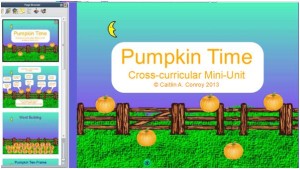 In my previous post Using ActivInspire to Create Cross-Curricular lessons, I introduced you to some basic ActivInspire skills when I created my Boots for Beth cross-curricular lesson. I wanted to advance my ActivInspire skills, so I viewed some different tutorials to learn how I could make my ActivInspire Flipcharts more engaging.
In my previous post Using ActivInspire to Create Cross-Curricular lessons, I introduced you to some basic ActivInspire skills when I created my Boots for Beth cross-curricular lesson. I wanted to advance my ActivInspire skills, so I viewed some different tutorials to learn how I could make my ActivInspire Flipcharts more engaging.
Continue reading
Creating a Glog on the Life Cycle of a Chicken with Glogster EDU
In Reading we read the story, Dan’s Pet, about a boy who keeps a pet chick named Jen for pet. Throughout the story Jen grows into a hen. At the end of the story, Jen lays eggs. I thought this week would be a good opportunity to teach students more about the life cycle of chickens. I had used Glogster EDU during my graduate studies, and I always wanted to try to use it with my students. I set out to have my class make a Glog on the life cycle of a chicken. Continue reading
Using ActivInspire to Create a Cross-Curricular Lesson
Lesson Background
In class we read the story Boots for Beth about a pig named Beth. At the beginning of the story Beth can’t get her boots on because they are too small. Throughout the story Beth’s animal friends offer their boots, but none of them are right for Beth. At the end of the story the friends surprise Beth with a new pair boots. Our focus reading comprehension skill for the week was retelling. I knew I wanted to work this skill into the project if possible.
In math we have been working a lot with ten-frames. I thought it would be fun for students to drag boots onto the ten-frame instead of boring counters. I decided to use ActivInspire to create this presentation.
Mind Mapping with Popplet
This week we read an informational text titled All That Corn in our Harcourt Trophies reading books. On Day 2 of the Harcourt Trophies plan it recommends that the teacher help students create a concept map about farms. I have been eager to use a new, web-based, mind mapping tool with my students and I saw this as the perfect opportunity. When I did my action research during my graduate studies with my PreK students, I used Kidspiration software for mind mapping. Kidspiration is a good software package, but for the purposes of this blog I want to make sure that I am showcasing applications that are free and accessible to everyone. Plus, I know there are many mind mapping tools that have come out in the past few years, so I wanted to familiarize myself with the new tools out there. The world of educational technology is ever-changing, so it is important to stay up to date!
Continue reading

